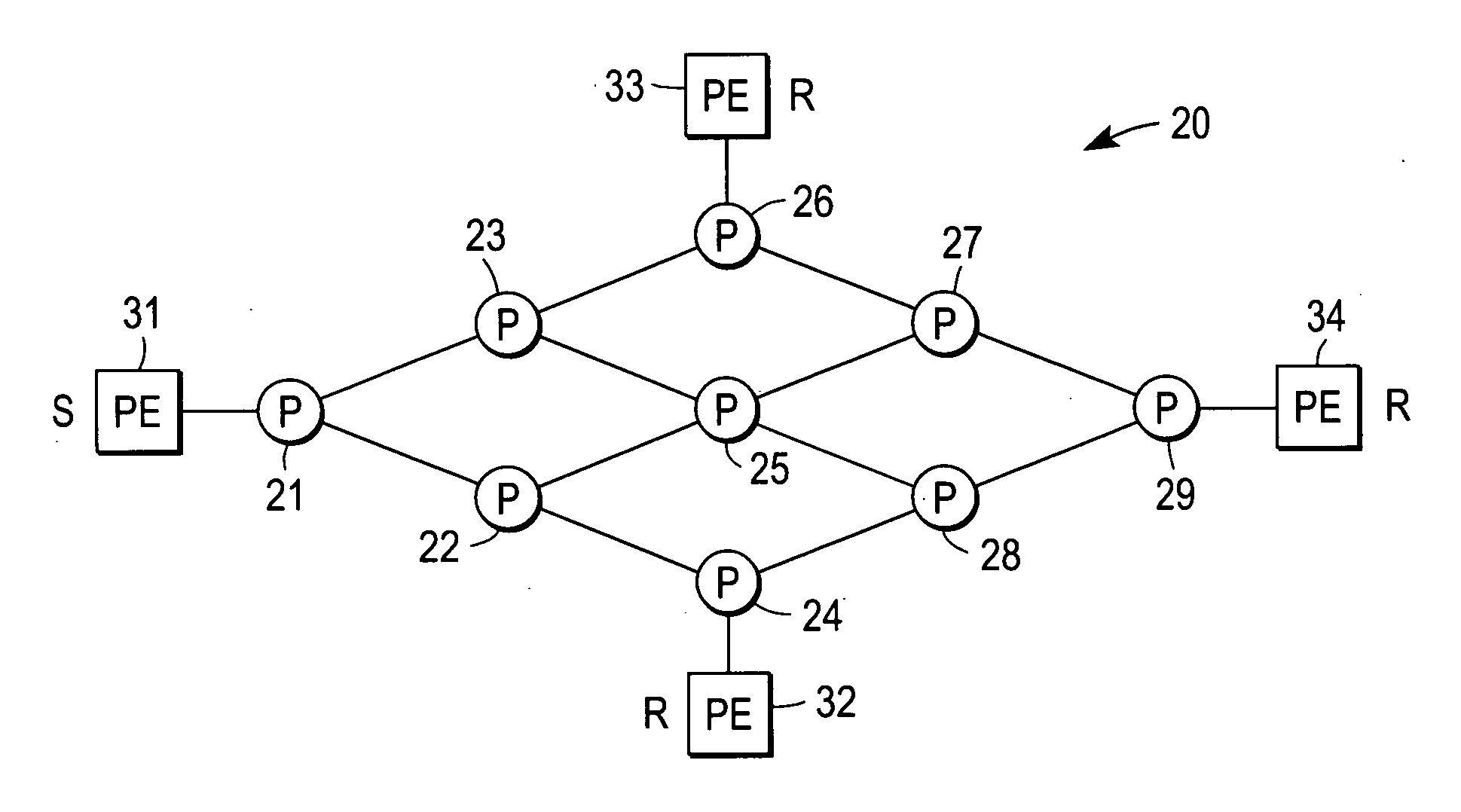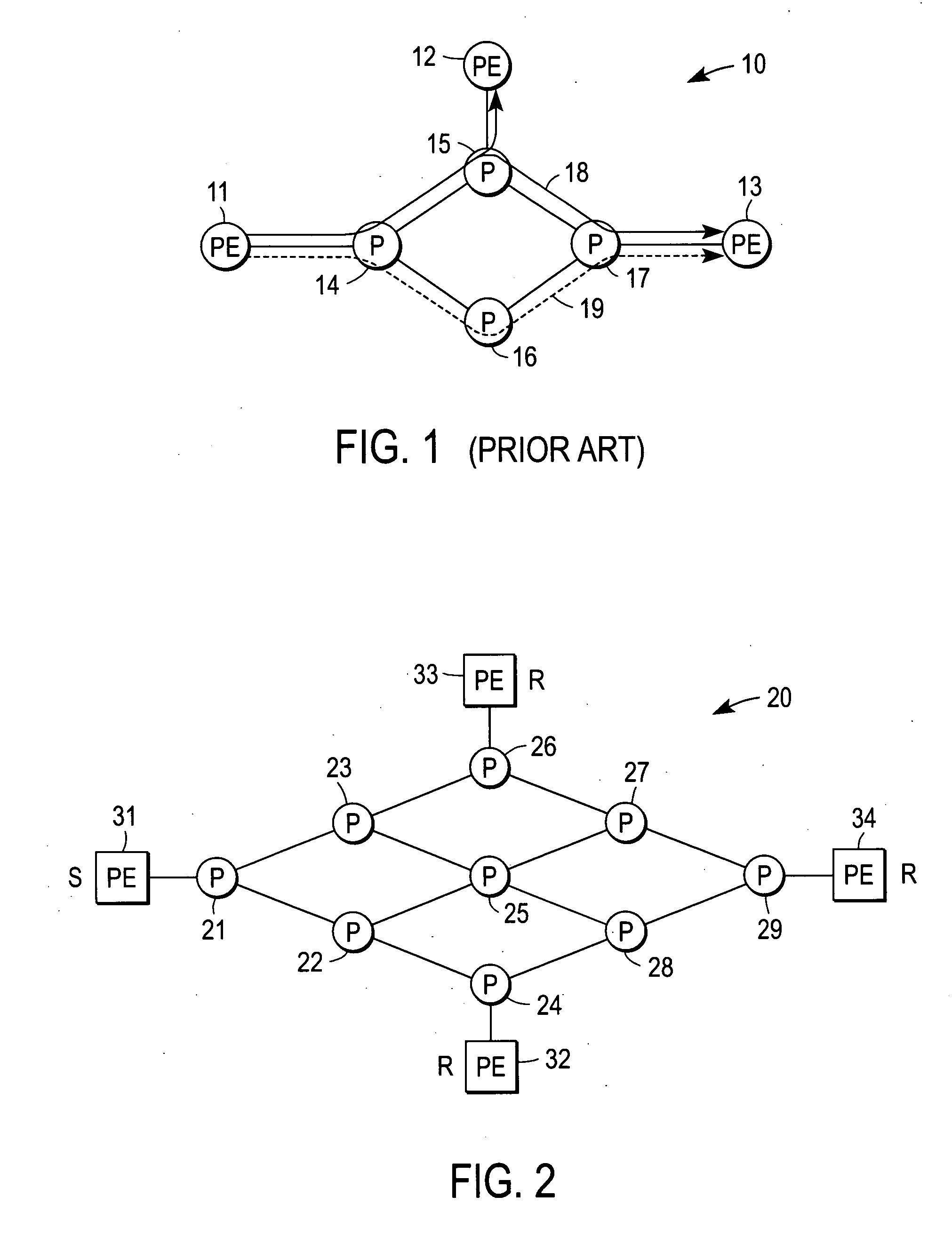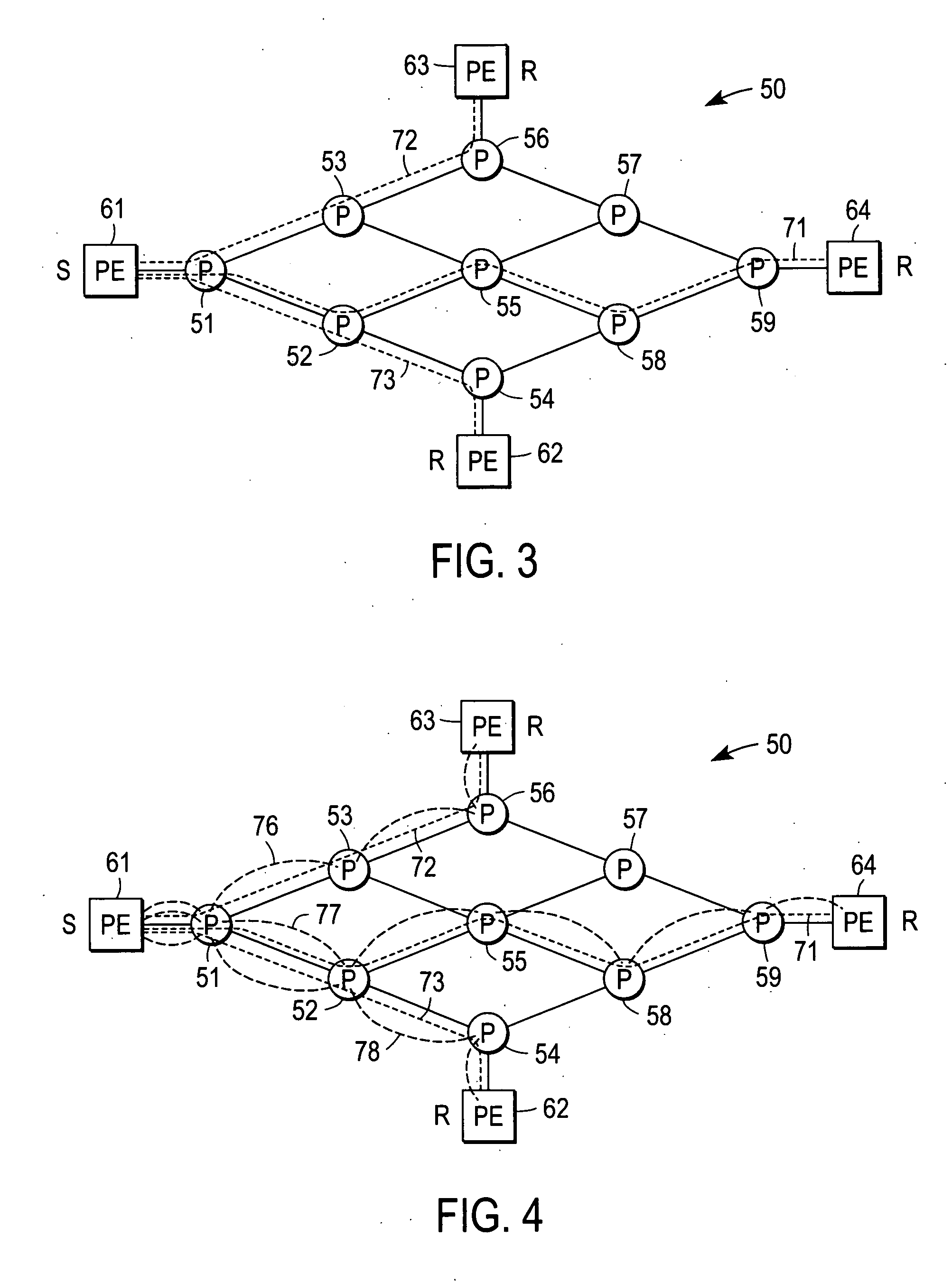Optimal bridging over MPLS / IP through alignment of multicast and unicast paths
a multicast and unicast path technology, applied in the field of digital computer network technology, can solve the problems of inability to meet high bandwidth applications, inability to completely eliminate the replication problem at the ingress pe, and inefficient replication mpls/ip core network resources of the ingress p
- Summary
- Abstract
- Description
- Claims
- Application Information
AI Technical Summary
Problems solved by technology
Method used
Image
Examples
Embodiment Construction
[0022] A mechanism for aligning unicast and multicast paths in a service provider network, and which thereby achieves shortest path (i.e., optimal) bridging, is described. In the following description specific details are set forth, such as device types, protocols, network configurations, etc., in order to provide a thorough understanding of the present invention. However, persons having ordinary skill in the networking arts will appreciate that these specific details may not be needed to practice the present invention.
[0023] A computer network is a geographically distributed collection of interconnected subnetworks for transporting data between nodes, such as intermediate nodes and end nodes. A local area network (LAN) is an example of such a subnetwork; a plurality of LANs may be further interconnected by an intermediate network node, such as a router, bridge, or switch, to extend the effective “size” of the computer network and increase the number of communicating nodes. Example...
PUM
 Login to View More
Login to View More Abstract
Description
Claims
Application Information
 Login to View More
Login to View More - R&D
- Intellectual Property
- Life Sciences
- Materials
- Tech Scout
- Unparalleled Data Quality
- Higher Quality Content
- 60% Fewer Hallucinations
Browse by: Latest US Patents, China's latest patents, Technical Efficacy Thesaurus, Application Domain, Technology Topic, Popular Technical Reports.
© 2025 PatSnap. All rights reserved.Legal|Privacy policy|Modern Slavery Act Transparency Statement|Sitemap|About US| Contact US: help@patsnap.com



